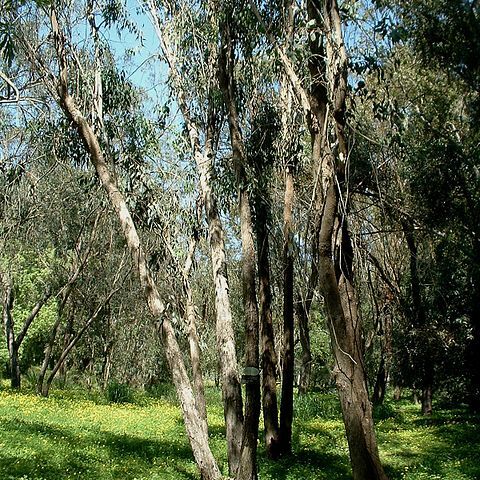Tree to 25 m with rough fibrous bark on trunk but white and smooth above.. Juvenile leaves ovate or ± round; adult lanceolate, 10–16 cm long, 1.7–3 cm wide; petiole not or slightly flattened, 1.5–2.2 cm long.. Umbels 7-flowered; peduncle quadrangular, 1–1.5 cm long, pedicels 0–5 mm long.. Buds cylindrical, glaucous; operculum conical, 4–8 mm long, 4–7 mm wide.. Calyx-tube 4–8 mm long, 4–7 mm wide.. Fruits glaucous, cylindrical to suburceolate, 6–15 mm long, 5–10 mm wide, often ribbed.. Fig. 5/1, p. 30.


